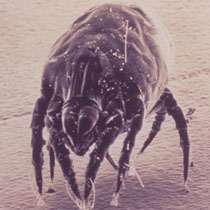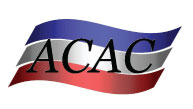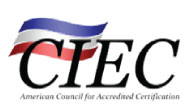Indoor Allergens and Air Quality
Allergens (Cat, Dog, Rodent, Cockroach, Dust Mites, and Mold) can be measured from dust samples and were previously analyzed using Quantitative Enzyme-Linked ImmunoSorbent Assay (ELISA), but newer technology has replaced this method and is called Multiplex Array for Indoor Allergens (MARIA). We can perform sampling in living spaces to determine if excessive levels of allergens are detected. Based upon levels observed appropriate cleaning or decontamination will be recommended.
Another tool used to determine airborne levels is an additional particle analysis of fungal bioaerosol samples. Bioaerosol levels are not as precise as with the dust analysis, but airborne analysis is a good initial screening tool to gather information about the presence of allergens in occupied spaces.
Sensitivity to indoor allergens is a worldwide problem for large segments of the population and is relevant from early childhood through adulthood. Indoor allergens have been shown to play a major role both in sensitization and as triggers of asthma in children.
Dust Mite Allergens
Dust mites are ubiquitous and are found in every household. Mites prefer warm, moist surroundings such as the inside of pillows or mattresses. The mites feed on human dander (skin scales) that accumulate in bedding and house dust. Dust mite allergens are proteins that come from the digestive tract of mites and are found in high levels in mite feces. The allergen containing fecal balls are relatively large (~10-20 um) and remain in the air for short periods. Most exposure occurs through disturbance of dust near the breathing zone.
Cat and Dog Allergens
Cats and dogs are the most common animal cohabitants, present in more than 1/3 of homes in the United States. Those who touch cats and dogs or visit households with cats and dogs easily carry these allergens from home to home, office, school, etc. These pet allergens are carried on particles ranging from 1 to 20 mm in diameter and the smaller of these particles can remain airborne for long periods of time. Consequently, pet allergens are spread easily throughout a house even when pets are kept out of certain rooms.
Cat and dog allergens are also very sticky and can be found in high levels on walls and other surfaces within homes. Carpeting, bedding, and upholstered furniture can be reservoirs for deposited pet allergens. In most of the studies, a vast majority of homes have been found to contain pet allergens, even if pets are not present. This widespread distribution has been presumed to occur primarily through the passive transfer of these allergens from one environment to another. The major cat and dog allergens are low molecular weight proteins found primarily in animal secretions. They are produced in the sebaceous, salivary, and anal glands.
Touching the pet and subsequently transferring allergen from hand to nose is only one mode of contact. The most important route of exposure is by inhalation of airborne allergen. This allows the deposition of large quantities of the allergen in both the upper and lower airways. The aerodynamic characteristics and the potent nature of pet allergens make clean-up efforts and minimization of allergens in a building very difficult. The best approach is to remove pets from the indoor environment, followed by extensive cleaning to remove the residual allergen. Even after the most intensive cleaning, it can take up to 6 months before you begin to see the impact of allergen reduction.
Cockroach Allergens
Cockroaches are an important source of indoor allergens worldwide. Cockroach allergens are widely distributed in homes and schools and can be found in beds, furniture, and carpets, with the highest levels typically found in the kitchen. However, cockroach allergens may be more relevant in the bedroom than the kitchen or the living room because of close contact with the pillow while in bed.
About 20% of homes with no evidence of cockroach infestation have significant levels of cockroach allergen in settled dust. The level of cockroach allergen in school dust is of concern because it may constitute an occupational risk to students, teachers, and other school workers. The sources of cockroach allergens include the gastrointestinal tract, saliva, feces and body parts of the cockroach. As cockroaches die in a dwelling, their decomposing body parts become part of the environmental dust.
Rodent Allergens
Rodents (mice and rats) can occur in both home and work environments. Exposure to rodents can come either from keeping them as pets or from their presence as pests in the home. Veterinarians, laboratory technicians, etc., can become allergic to rodents due to intensive exposure to these animals in their daily work. Rodents can also be a problem in schools.
The sources of rodent allergen include rodent urine and skin flakes. The rodent’s urine has a high concentration of protein, which is the primary allergen to humans. The urine is often sprayed rather than deposited, thereby increasing human exposure. After the urine dries, the urinary proteins become airborne and are inhaled by humans, leading to allergic symptoms.
Mold Allergens
Mold is very common and widely distributed outdoors. Mold can flourish in homes when in contact with sufficient water and food. Bathroom condensation, leaky roofs, plumbing leaks, and water seepage in basements can all lead to mold growth. However, the most common problem leading to mold growth is condensation on cool surfaces due to inappropriately high relative humidity. Mold has been isolated from indoor materials like furniture, carpet, clothing, house dust, paper goods, wood, insulation materials, heating, and air-conditioning systems, etc. The key to reducing mold growth is reducing moisture.
Information provided in this section is not intended to provide medical advice, nor shall it be interpreted as an indicator of potential medical or safety problems. If you have concerns or questions relating to your health, please contact your medical doctor for advice.
Compiled from a 2005 Environmental Microbiology Laboratory, Inc. report.

Dust mite viewed under microscope
A good resource for monitoring outdoor allergen (mold and pollen) levels:
The National Allergy Bureau™ (NAB™) is the section of the American Academy of Allergy, Asthma, and Immunology (AAAAI) Aeroallergen Network that is responsible for reporting current pollen and mold spore levels to the public.
Follow this link: http://www.aaaai.org/nab/index.cfm?p=pollen
Call an Indoor Air Quality and Allergen Sampling Expert Today at 847-344-0607



